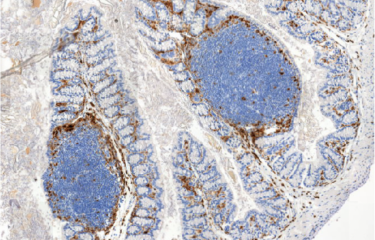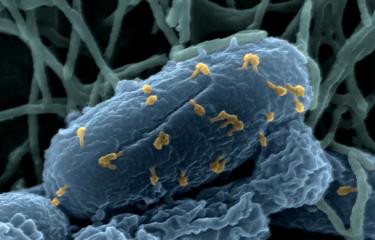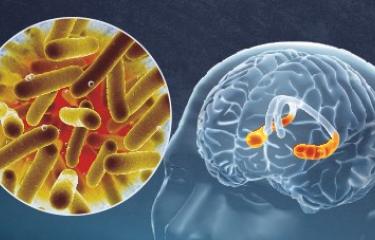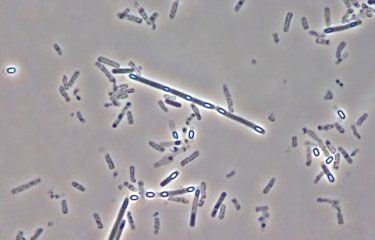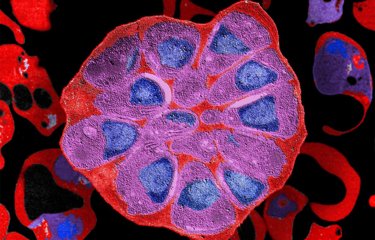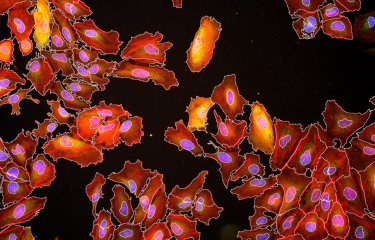Researchers from the Institut Pasteur and CNRS, in collaboration with scientific teams from IRD, University Claude Bernard Lyon 1*, and CIRMF in Gabon, have demonstrated that differential bacterial exposure during the development of mosquito larvae (Aedes aegypti) can have “carry-over” effects on adult traits related to an insect’s ability to be a successful vector of arboviruses. These results provide the first empirical proof of principle that the larval microbiota can modulate the ability of adult mosquitoes to transmit human pathogens. This study, published in the scientific journal Science Advances on August 16th 2017, represents an important step toward a more comprehensive understanding of how the environment shapes the risk of vector-borne disease.
Mosquitoes are holometabolous insects (i.e. organisms that go through a complete metamorphosis). As such, they occupy two main habitats during their life cycle. The larval stage develops in water and the adult stage lives on land. The adult traits of mosquitoes (e.g. body size, lifespan, susceptibility to human pathogens) depend on environmental conditions experienced both during larval development and during adult life.
Recently, the scientific community has realized that the adult mosquito gut microbiota (the microbes that are living in the gut of the mosquito) contributes to modulate the transmission of mosquito-borne pathogens. However, the role of the microbiota of larvae in influencing adult traits has remained under explored.
This question is particularly important for Aedes aegypti, a major vector of arboviruses such as dengue, yellow fever, Zika and chikungunya viruses. In sub-Saharan Africa, Ae. aegypti exists in an urban form and a forest form, and the larval breeding sites differ between the two. Whereas the urban form develops in man-made containers such as used tires and discarded items, the forest form develops in natural breeding sites such as rock pools and tree holes.
Researchers from the Institut Pasteur and CNRS, in collaboration with scientific teams from IRD, University Claude Bernard Lyon 1*, and CIRMF in Gabon, observed differences in the gut microbiota of Ae. aegypti larvae breeding in the forest or in the urban environment. Back to the lab, they demonstrated that differential bacterial exposure during the development of Ae. aegypti larvae can have “carry-over” effects on adult traits related to a mosquito’s ability to be a successful vector of arboviruses. Thus, exposure to different bacteria during development results in variation in the speed at which that larvae develop, the size of adult mosquitoes, immune activity of adults, as well as susceptibility to dengue virus.
As explained by Laura Dickson, first author of the study and researcher at the Institut Pasteur, “this discovery is highly significant because it provides the first empirical proof of principle that bacteria in the aquatic environment can modulate the ability of adult mosquitoes to transmit human pathogens.” According to Louis Lambrechts, researcher at CNRS, head of the Insect-Virus Interactions group at the Institut Pasteur and coordinator of the study, “our discovery calls for an increased appreciation of the role of larval ecology in the transmission of mosquito-borne pathogens.”
These findings represent an important first step toward a more comprehensive understanding of how the environment shapes the risk of vector-borne disease. Improved knowledge on the bacteria found in natural larval breeding sites and their consequence at the adult stage could lead to new disease control strategies. For instance, this could be done by targeting the breeding sites where mosquito larvae are most likely to become efficient vectors of arboviruses. An alternative could be to directly manipulate the bacteria in breeding sites to reduce the ability of mosquitoes emerging from these sites to transmit human pathogens.
* The French research labs involved in this study are : the Insect-Virus Interactions Group (CNRS/Institut Pasteur), the MIVEGEC (“Maladies infectieuses et vecteurs : écologie, génétique, évolution et contrôle”) research unit (CNRS/IRD/Université de Montpellier), and the Microbial ecology lab (CNRS/Université Claude Bernard Lyon 1/Inra/Vetagro Sup).
The study was funded by the French government’s Investissement d’Avenir program, the LabEx IBEID (Laboratoire d’Excellence Integrative Biology of Emerging Infectious Diseases), the Agence nationale de la recherche, the City of Paris Emergence(s) program in Biomedical Research, and the Centre national de la recherche scientifique.
Source
Carryover effects of larval exposure to different environmental bacteria drive adult trait variation in a mosquito vector, Science Advances, August 16th, 2017
Laura B. Dickson(1), Davy Jiolle (1,2,3), Guillaume Minard (4,5,6), Isabelle Moltini-Conclois (1), Stevenn Volant (7), Amine Ghozlane (7,8), Christiane Bouchier (8), Diego Ayala (2,3), Christophe Paupy (2,3), Claire Valiente Moro (4,5) and Louis Lambrechts (1)
(1) Insect-Virus Interactions Group, Department of Genomes and Genetics, Institut Pasteur, CNRS URA 3012, Paris, France.
(2) MIVEGEC, UMR IRD 224-CNRS 5290-UM, Montpellier, France.
(3) Centre International de Recherches Médicales de Franceville, Franceville, Gabon.
(4) Université de Lyon, Lyon, France.
(5) Université Lyon 1, CNRS UMR 5557 Ecologie Microbienne, INRA UMR 1418, Villeurbanne, France.
(6) Metapopulation Research Center, Department of Biosciences, University of Helsinki, Helsinki, Finland.
(7) Bioinformatics and Biostatistics Hub, C3BI, Institut Pasteur, USR 3756 IP CNRS, Paris, France.
(8) Genomics Facility, Biomics Pole, CITECH, Institut Pasteur, Paris, France.
DOI: 10.1126/sciadv.1700585




